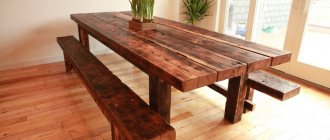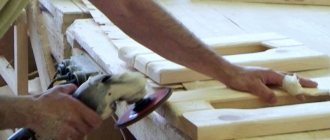Any mechanism sooner or later requires adjustment and doors are no exception. Adjusting doors is not the easiest thing, but if you want, you can master this science. Next, we will try to figure out how to adjust hinges, fabric pressure, problems with the lock, etc. We will pay special attention to the question of how to adjust doors made by our Chinese friends.
Proper door adjustment will extend the service life of the mechanism significantly.
How to regulate
Corrective work is required against the background of the appearance of a natural imbalance in the mechanism. This is due to the process of long-term operation.
Adjustment is required when the mechanism fails
In what case is the installation done efficiently?
Durability and service life depend not only on the quality of materials. And also if the installation is performed poorly.
When accepting a job, pay attention to:
- the tightness of pressing the frame to the box (it should fit tightly and evenly around the entire perimeter);
- the functioning of the door (it should open and close easily);
- verticality of the door (checked by the building level).
In order to make sure that after installation the plastic door is working properly, it is opened halfway and the “behavior” is observed. If it tends to open or close, the installation was performed poorly.
Factors such as wind or draft should be taken into account.
Opening and closing the door should be easy and smooth
How faults are detected
You can check if repairs are needed like this:
“Arm yourself” with a piece of paper and place it on the open door frame
Close the box tightly and pull the sheet towards you. Carry out such a check along the entire perimeter. It is important to pay attention to the force with which you have to pull out the paper in one area or another. Where the sheet is pulled out with effort, the structure is pressed tightly against the box. You can identify distortions by closing the plastic door by tracing the canvas. Then you should open and check the “fresh” line with the frame
It should “parallel” the frame.
A sheet of paper will help you check how well the mechanism works.
What tools are needed for the job?
In order not to be distracted by extraneous factors during the work process, it is recommended to immediately prepare the necessary tools, equipment and materials presented below:
- Pencil for marking.
- Ruler or construction tape.
- Screwdriver and set of screws.
- Drill and cutter.
- Building level.
- Hammer and chisel.
After you have prepared all the specified tools and placed them in the work area, you can begin.
Self-adjustment of a metal door
It is carried out in several stages to eliminate all possible causes of incorrect operation of the structure:
- faulty door closer
- lock
- loose fittings or awnings
- poor sealing material.
Adjusting the door closer
The smoother the closer moves, the easier it is to use the door.
The mechanism of the device, which is installed instead of the spring, may be to blame for the fact that it opens poorly or does not close completely.
- To change the door closing speed, the existing control valves are turned.
- The tension of the closer is adjusted with a special nut by turning it in the direction of tightening or loosening the tension.
- To prevent sudden opening of the canvas, the adjusting nut is tightened counterclockwise. This will reduce the opening angle.
Adjusting and cleaning the locking mechanism
If adjustment by the indicated methods does not lead to the desired result, the reason for the improper operation of the door structure may be in the lock. In order for it to work properly, it must be maintained in working order by lubricating and cleaning. To remove accumulated dirt from the mechanism, you can use the popular Lock spray or Lock kleaner.
- A certain amount of cleaning agent is sprayed into the keyhole so that it flows out a little.
- Insert it, and then, without turning it in any way.
- Wipe the key with a clean rag and repeat the procedure until no more dirt appears on the key.
- Inject lubricant into the key hole, insert and remove the key 2-3 times, and then turn it in different directions several times.
Adjusting hinges on an iron door
If the canvas rubs against the platbands, you need to move it slightly away from the box by adjusting the position of the hinges. To do this you need:
- Loosen the fasteners on the hinge located next to the friction point.
- Use a screwdriver to move the hinge to the side to create a small gap.
- Secure the position with fasteners, press down and carefully close the door.
- If there is no more friction, securely fix the loop in this position.
- If friction occurs elsewhere on the web, the operation is repeated until the desired result is achieved.
Getting rid of drafts
If cold air blows from under the door and it no longer fits tightly to the frame, then it is time to replace the seal, which is always present in the iron structure.
You can purchase sealing tape at any hardware store. Having removed the remnants of the old material, a new seal is carefully glued in its place.
In order for an iron door to reliably protect your home and serve you for many years, you need to promptly correct problems noted in the construction. It is better to spend some time on preventive maintenance than to completely replace the entire structure.
The interior door, unlike its entrance counterparts, is characterized by structural flexibility. The absence of a rigid metal frame at the base causes a higher susceptibility to all kinds of defects and irregularities in geometry. As a result, adjustment or restoration of the structure is required. How to adjust an interior door? This depends on the nature of the malfunction, operating conditions of the door leaf and a number of technical nuances.
Adjusting plastic door hinges
The hinges of a plastic door have a slightly different structure than for heavier structures, and therefore the order of their adjustment changes. In practice, the most common need for horizontal adjustment is that the hinges move out of their places under the influence of the weight of the door leaf. This annoying problem has the following solution:
- Remove the protective pads from the two top hinges.
- Find a horizontally located long screw and, using a hex wrench, begin to tighten it smoothly until the door reaches the desired position.
- This action should be carried out with all installed hinges if there is a need to move the entire door leaf.
Vertical adjustment
Sometimes vertical adjustment of the hinges may be required, which is done as follows:
- Remove the cap from the adjustment screw located at the bottom of the hinge (sometimes this cap may not be present, so this step is not necessary).
- If the door needs to be lifted, make the required number of turns clockwise.
- To lower the door leaf, rotate the screw counterclockwise.
To check the need to adjust the door leaf, place a sheet of paper in the gap between the door and the leaf, then close the door. If the sheet is pulled out with different forces in different places of the door, you need to adjust the hinges.
Door pressure adjustment
Adjustment of hinges can be performed not only horizontally and vertically. The modern design allows you to change the amount of pressure of the canvas to the box. This setup is very simple and takes just two easy steps:
- Inspect the door frame for the location of the lock pin. It looks like a small bolt protruding from the frame with a recess for a hex key.
- To increase the pressure, rotate the axle so that the notch on its surface turns in the direction opposite to the frame. To loosen the pressure, the trunnion is rotated towards the frame.
Adjusting door hinges is, in most cases, a matter of minutes, which will help get rid of unpleasant squeaks, skewing of the door leaf and other deformations that may lead to the need to replace expensive parts. Spend time on your doors, it's so simple! To consolidate the information received, watch the thematic video.
The question about adjusting doors is relevant at any time and for absolutely all people. No one is immune from minor breakdowns in the house, especially if it concerns such frequently used structures. How to cope with the problem should be considered in relation to specific elements of filling the doorway.
Sometimes interior doors require adjustment
Lubrication as the basis of any adjustment
In this case, it is not so important what kind of doors we are talking about; if the structure begins to creak, something needs to be done about it. There can be 2 reasons for the squeak:
- You are very lucky, if the structure is poorly lubricated, you can eliminate this misunderstanding yourself and quite quickly. You can read about different types of door lubricants and the subtleties of using certain compounds “here”;
- The second reason for the squeak is an unbalanced mechanism and here fine adjustment of the door hinges is required, but in any case the mechanism must be lubricated before it.
Universal lubricant.
Keep in mind that if you have recently installed your iron door and the warranty has not yet come out, you should not bother adjusting the doors yourself, call a specialist, but again, do not delay in calling the specialists, otherwise a slight squeak may “crack out” into a major breakdown.
A loop that is not lubricated and adjusted in time can lead to disastrous consequences.
If it is clearly visible that the hinges are completely rusty, and in addition to squeaking, they also move poorly, there is no need to try to force them out or knock off the rust, there is such a good remedy for this as WD40, spray it a couple of times and in half an hour things will go faster.
The easiest way to care for regular male/female garage hinges (as in the photo). Ideally, it is better to remove the door leaf, but the metal structure is heavy and it is problematic to do this alone, so you place some kind of beam under the leaf and, leaning on it, slightly lift the door with a crowbar, after which you pump lubricant into the hinges.
The easiest way to remove old grease is with a rag or sponge.
Many people advise blowing the hinges with air, for example with a hair dryer, in order to remove old grease; this activity is ineffective and often useless. It’s easier to take a clean rag and wipe everything you can with your hands, it will be more helpful.
Adjusting the front door begins with removing old grease and applying new one.
What to do if the doorway is larger than the door leaf
Narrowing a doorway is a painstaking and troublesome process, but it is also quite possible.
Narrowing the doorway: option 1
One of the most reliable ways is to reduce the doorway using bricks or concrete blocks. In addition, you will need fastening material, sheathing (plasterboard/chipboard), as well as a screwdriver, hammer drill or drill.
Progress:
- First, make a frame from a metal profile
- Having previously prepared the cement mortar, fill the structure installed in the wall with brick or aerated concrete.
- After a day, when everything has dried a little, you can start covering.
Narrowing the doorway: option 2
You can also reduce the doorway in an interior door from the manufacturer using a wooden beam. All you need to do is select a timber that is suitable in width and you can begin installation. But you need to take into account that the beam should be 20-30 mm smaller than the cross-section of the opening.
To work you will need the following tools:
- plane,
- screwdriver,
- hammer,
- screws,
- nails,
- drill or hammer drill.
Progress:
- Place the wooden beam tightly against the wall and use a plane to adjust it to the required dimensions.
- Secure the beam with self-tapping screws or nails. You can use a hammer to adjust the tilt of the beam.
- Be sure to use a level from time to time to avoid distortions.
- Seal the resulting cracks with foam.
- Cover the wooden beam with decorative panels.
Narrowing the doorway: option 3
The next way to narrow a doorway when installing inexpensive doors is using drywall. Drywall is less durable, but this method is especially popular when you need to slightly reduce the opening. The main tool to use will be a screwdriver, and you will also need a metal profile and, in fact, the drywall itself.
Progress:
- Prepare the parts for the future metal profile frame. It is better to do this according to a pre-planned scheme.
- Make holes at the top of the opening approximately 15 centimeters apart. These are the hangers that will hold the frame.
- Proceed to secure the frame elements.
- Using a screwdriver, cover the structure with plasterboard.
- Irregularities need to be puttied and then the surface treated with a primer.
If you need to narrow the opening when installing inexpensive interior doors by only a couple of centimeters, then this can be done using ordinary plaster.
Tips for adjusting door closers
If adjusting the closer does not help to establish a comfortable mode for opening/closing the door, it is recommended to remove the product and install it again, since an error may have been made during the initial installation. Before reinstalling the closer, check the blade and hinges for damage that could cause the mechanism to malfunction.
To ensure long-term operation of the closer, you should never press the closing flap to speed up the process, since the lever closing system may not cope with the force, break, or cause oil to leak out of the mechanism. It is also not recommended to slow down the speed of closing the door by holding the leaf or fixing it with any objects; this can also lead to malfunctions.
If necessary, the closer can be turned off temporarily by simply disconnecting the parts of the lever from each other, which will ensure free movement of the door structure.
Before installing or tightening the door closer, first read the information in the instructions, and then proceed directly to adjusting the mechanism on the door.
Before purchasing, it is recommended to familiarize yourself with such parameters of the mechanism as resistance to negative temperatures and withstanding the maximum weight of the door leaf. A door closer designed for indoor use will fail with the onset of cold weather. A mechanism designed for an interior door is not able to withstand a heavier metal entrance door, which will lead to its breakage.
Regular adjustment of the door closer will not require special skills, financial costs or a lot of time, but will ensure proper operation and long service life of the mechanism.
Hidden with closer
Door hinges with a closer are devices that operate on a hydraulic principle without the use of hands or force. This is a modern design consisting of a spring located in a cylinder with oil. These hinges are installed on light, narrow doors. For massive and heavy doors, more powerful closers are used. The opening process will be difficult for them. Very often, such structures can be found in entrances or in industrial buildings. The service life of the closer is quite long. But such doors cannot be adjusted.
Adjusting interior sliding doors
The operating principle of sliding interior doors is often somewhat different from that described above. Here, the door rollers are attached to the upper end of the leaf and inserted into a bar fixed above the doorway. The installed door is in a hanging position.
Adjustment of sliding doors of this type consists of eliminating possible sagging of the door.
Sliding interior door mounting diagram
Sagging is eliminated as follows:
- Dismantle the decorative panel (platband) installed above the doorway, opening access to the rollers.
- An adjusting element is found on the rollers and, using an open-end wrench of a suitable size, they “pull” the door up. In this case, the friction of the door on the flag roller located in the groove of the lower end of the leaf and/or on the floor should disappear.
To access the control elements, you must remove the decorative panel
- Check the position of the door after level adjustment.
- Place the decorative strip in place.
So, we looked at ways to adjust sliding doors. If you have a question about this material, you can put it in a comment under the article or to a specialist in the appropriate section.
How to assemble a box
Before cutting the box beam, the height and width of the doorway are correctly measured. It is recommended to measure each indicator in three places, for example, the height of the opening is measured at the highest, lowest and middle points.
The lowest indicator will be considered the main one, which allows you to install a door block that will easily fit into the opening. In addition, the thickness of the box (usually 2.5-3 cm) and the width of the canvas are subtracted from each main indicator. The gap on the interior doors is at least 4 cm, into which the polyurethane foam will be forced. How to do all the work yourself is clearly shown in the video, which you can see just below in the article.
After all the dimensions have been calculated, you can begin cutting the box strip. The plank is cut in two ways: at an angle of 45 or 90 degrees. The first method requires skill and a miter saw. Anyone can cut the box at a 90 degree angle using a hacksaw.
The stages of assembling the box begin with laying the prepared timber on the floor in the letter P and fixing it with threaded hardware using a screwdriver. This frame shape is suitable for installing an interior door without a threshold. If a threshold is needed, then another horizontal strip of the same size as the top one is cut. To reduce the likelihood of cracking of the timber, it is recommended to first drill a through hole in it with a drill, into which the hardware is then screwed.
The assembled box is inserted into the opening, the presence of gaps for the foam is checked, and then it is wedged and leveled using plumb lines. Ignoring this procedure leads to distortion and improper operation of the door, for example, opening occurs with difficulty, it is impossible to close the door tightly, etc.
If the box fixed with wedges or bars in the opening is level, that is, the vertical slats are strictly parallel to each other, and the horizontal slats are strictly parallel to the floor level, you can begin hanging the canvas and foaming.
For greater stability and reliability of a heavy door block, the frame is fixed to the walls using anchors or long self-tapping screws with dowels. Drilling a through hole with a drill of a slightly larger diameter than the hardware allows you to eliminate the possibility of cracking of the box beam. It is mandatory to drill holes for dowels in a concrete or brick wall.
For better adhesion of the foam and the end of the door, the opening is thoroughly cleaned of small debris and dust, and then lightly moistened with water from a spray bottle. The foam can be any type, since the work is carried out in a warm room. Both professional mounting foam, which works complete with a gun, and household foam, the container of which is equipped with a special thin tube, are suitable. The only difference is the amount of foam: usually in professional cylinders the volume of material is larger. On average, one door with a gap for foam uses up to 50 liters of the substance.
How to install interior doors yourself, see the video below.
Please note that the installation of door blocks for rooms is carried out on finished walls and floors; floor skirting boards are installed after the doors are installed. It is allowed to install doors in rooms with finely finished walls and unfinished floors with a mandatory gap at the bottom of the opening for the floor covering
How to eliminate a squeak
The reasons for the appearance of squeaks are usually the following:
- The hinge is contaminated with dirt and dust.
- Thinning of the lubricant layer.
- The emergence of friction points between the door and the frame.
Finding the cause can be quite difficult; sometimes it is necessary to carry out maintenance work on the door and frame several times until the defect is removed.
Old style hinged doors need to be removed from their hinges. Then the hinge pin is thoroughly cleaned of dirt, remnants of old grease mixed with dust, etc. Then carefully lubricate the hinge pin and ring with grease. Litol or grease is used as a lubricant. The hinge washer is inspected and replaced if necessary.
If the design of the hinges does not allow the door to be removed (most modern doors are hung on such hinges), you need to use liquid lubricant. A can of WD-40 or a syringe with machine oil will do. All rubbing areas are thoroughly treated with lubricant. The points where you need to apply oil are shown in the figure:
If the hinges are hidden, you need to examine them carefully, find all the rubbing parts and lubricate them with liquid oil. Many models have special holes for introducing lubricant into the canopy mechanism. You can see the location of such holes by studying the instructions supplied with the door.
After lubricating, the door must be opened and closed several times so that the lubricant is evenly distributed in the mechanism. Try different modes: suddenly open and close the door, then do it smoothly. This will ensure that the squeak is completely eliminated.
After work, do not forget to wipe off excess grease from the canopies. Such drips not only have an unsightly appearance, but are also capable of collecting dust.
What to lubricate with?
Everyone is familiar with the sound of a creaking door and the fact that it really drives many people crazy. The hinges rust, dirt appears on them, they are difficult to open, they creak and wear out.
All you need to do is lubricate them periodically. What is needed for this:
- Buy lubricant. The oil should penetrate as much as possible through contaminants and cover the surface of the hinge with a light layer. How to lubricate door hinges? Oil in spray form or with a narrow spout is ideal. Among the products worth noting are silicone grease and lithium grease. How to lubricate door hinges? Table or machine oil is also used.
- Find the rod. The loop consists of three parts: two cards and a rod that connects them. In order to lubricate the hinges as efficiently as possible, you need to remove the rod.
- Remove the rod. After opening the door, pull the element out. For greater convenience, use pliers.
Features of adjusting hidden hinges
There are two things you should know about this type of load-bearing hardware. Firstly, it can be adjustable or unregulated (only replacement is possible). Secondly, hinges of this type are rarely used in interior doors - hidden installation inside the house does not have any particular practical need (other than aesthetic), but it complicates installation activities.
And yet, how to adjust an interior door if this is, in principle, allowed by the design of the device? Usually problems arise due to vertical displacement of the sash, which is caused by poorly configured hinges. This problem is solved by reverse biasing the element. As a rule, use a hex wrench to first remove the hinges at the edges, and then loosen the central fixture. The last to be dismantled are the elements recessed at the ends. The central screw is responsible for the gap parameters (in particular, the width)
When adjusting it, it is important to take into account that the screws are tightened in the reverse order. In turn, trimming hardware will allow you to adjust the seating height of the sash
At each stage of the work, you should carefully monitor the position of the door along the vertical and horizontal planes.
Types of door hinges
Depending on the place of installation, door hinges are divided into hinges for entrance and interior doors. Based on the type of installation, hinges are divided into the following types:
- Detachable. To remove a door with such fastenings, you do not need to unscrew the hinges.
- Universal. To remove the doors, you will also have to remove the universal hinges.
Reinforced hinges for entrance and interior doors
The above is not a complete classification, because overhead door hinges are divided into three types according to their design:
- Invoices with insert (universal). Such hinges consist of two parts with holes, one is attached to the door leaf, the second to the door frame. They are often made of durable steel, so they are highly reliable and have a long service life.
- Overlays with insert (detachable). Complex installation, but easy installation and dismantling of the door leaf, as well as adjustment of the hinges themselves. As in the previous case, they are highly reliable and durable when used correctly.
- Invoices without insert (universal). They are easy and quick to install, do not cause problems during adjustment, cheap and reliable, and also the most popular.
Most often in practice, the above types of loops are used. More rarely, you can find screw-in and bar door hinges, as well as hidden ones that add reliability to the structure.
Such hidden loops will not allow unauthorized persons to break into
Self-installation of interior doors
After completing the preparatory work and procuring all the necessary tools, you can begin installing interior doors. The tools you will need are a hammer, a short rack level and a crowbar. In addition, it is necessary to purchase a cylinder with low-pressure polyurethane foam during polymerization. An example is Macroflex 65 foam. Wooden wedges should also be prepared. Today, there is a proven technology on how to install interior doors correctly. You can see the installation process in the video.
The first step is to place the door block in the opening
During this process, it is important to pay special attention to the side on which the structure is being installed. When performing installation, it is advisable to be located where the door will open. Now you should align the structure in the center of the opening
When moving the door block to the right or left, it is necessary to ensure equal gaps between the structure and the walls on both sides
Now you should align the structure in the center of the opening. When moving the door block to the right or left, it is necessary to ensure equal gaps between the structure and the walls on both sides.
At the next stage, you will need to make sure that the vertical position of the door frame pillars is correct. You can use a rack level for this. It must be attached to the bottom of the upper crossbar. If the level is not maintained, you will need to use a crowbar, using it to lift the desired rack and place wooden wedges under it.
After this, the door block should be secured to the partitions. To do this, it is necessary to drill holes with a diameter of 6 mm in the protruding part of the wooden lintels. Then dowels are driven into these holes. During the process of fixing the door block, it is necessary to check the position of the structure relative to the side walls from time to time.
After this, you should wet the door frame and opening with water. This procedure is carried out in order to increase the polymerization of the polyurethane foam and its adhesion to the walls of the opening. Then you need to once again make sure that the correct position of the door frame is maintained. To do this, use a rack level. In addition, it is necessary to check the presence of gaskets made of cardboard between the door leaf and the door. If some fell out during the work, they must be returned to their place.
At the next stage, it is necessary to fill the gaps between the door block and the partitions using polyurethane foam. After this, you need to let the foam set and dry. This will take several hours. As a rule, polyurethane foam completely hardens in 6-10 hours. It would be appropriate to say that polyurethane foam is a toxic material. To avoid unpleasant consequences of skin contact with it, you can use protective gloves. In addition, it is necessary to protect the surface of the products with masking tape, covering the door block around the perimeter with it.
After this, all auxiliary products must be removed. Now they are no longer needed. So, using a screwdriver, the dowels and screws that secure the lintels in the door frame are dismantled. Then you need to remove the slats themselves and open the door. The cardboard pads should fall out onto the floor on their own when the door is opened.
How to install mortise door hinges
After this, you can begin installing the door hinges. In order to properly hang doors on hinges, the top hinge is attached at a distance of 175 cm from the top edge of the door, the bottom - 250 mm from the bottom edge. The hinges cut into the frame and into the vertical timber of the door leaf. The frame should be secured in the opening with wedges for a while, after which you need to mark the position of the hinge cards on the door and on the frame.
Then the wedges need to be removed and the door placed on its edge. The opened hinges are laid out with a map according to the markings so that the hinge slightly touches the edge of the door, and are outlined with a pencil.
Along the intended line with a chisel, you need to make several shallow notches across the grain to the thickness of the card and select the wood. Then you need to drill holes for screws through the holes in the hinges. Both hinges are attached to the door, after which it is installed in the open position so that the hinge cards are aligned with the marks on the door frame. Check that the hinge hinges are exactly parallel to the box and mark the exact position of the hinge cards on the box. Just like on the door leaf, select the wood where the hinges will be installed.
Now you can begin installing the door in the opening. To properly hang the door, insert one screw into the frame through the hinge card holes. Try opening the door - it should not rub against the door frame. Otherwise, you will need to deepen the hinge slots a little or place a thin sheet of cardboard under the cards. If the door is located symmetrically and moves freely without touching the frame, then all you have to do is tighten all the screws.
By the way!
There are mortise hinges that lift the door slightly when it is opened. This allows the door to close independently under its own weight. This also prevents the door from touching the carpet. These hinges consist of two parts: the first is the lower card with a fixed axis, which is installed on the door frame, and the upper card, which is installed on the door leaf. The upper part with a hinge is attached to the door and fits onto the lower part, fixed to the frame.
Possible problems with a metal door
The list of problems that are most often encountered in steel structures looks like this:
- The appearance of an unpleasant creaking or grinding sound when turning the blade.
- When closing the door, it rubs against the door frame, damaging the decorative coating at the end.
- The appearance of cracks, gaps, the sash does not fit tightly to the frame.
- The door closes tightly, it takes considerable effort to do this.
- The lock does not work well; it is difficult to close.
- The closer does not perform its functions, the sash closes jerkily, not completely.
- The canvas is warped.
All these problems can be fixed on your own. The main thing is to be careful, have patience and simple tools for repairs. It is enough to have hex keys and wrenches, a file, a screwdriver and pliers. The materials you will need are machine oil, in some cases glue for the seal, as well as VD 40 aerosol.
The best option is to adjust the metal entrance door twice a year: in winter, provide a tighter door to conserve heat, and in summer, if necessary, you can loosen the fit of the door leaf to the frame.
Quite a lot of problems arise with goods that come from China. Such doors are popular because of their affordable price, but many craftsmen do not undertake to adjust the iron door, so the owner will have to carry out the maintenance himself. They need to be lubricated first, and then see if they need to be adjusted. The fact is that Chinese manufacturers often save on factory lubricant
When buying products from this country, it is important to pay attention to all components. 2 compensating washers should be installed under the supporting pins of the canopies. To save money, unscrupulous manufacturers put 2 pieces on only one loop, and on the rest - only one each
Due to the uneven distribution of the load from the mass of the sash, it warps very quickly
To save money, unscrupulous manufacturers put 2 pieces on only one loop, and only one on the rest. Due to the uneven distribution of the load from the mass of the sash, it warps very quickly.
Overhead hinges for doors made of metal-plastic
Features of the adjustment.
If the door is equipped with an overhead hinge (one of the most common options), its adjustment can be made in both two and three planes, depending on the functional features. Vertical misalignment of up to 5 mm is eliminated by adjusting the adjusting screw using a hexagon. In order to get to it, you need to remove the decorative trim from the hinges.
If there is a need to raise or, conversely, lower the door, you should find another adjusting screw at the bottom end, hidden under the detachable strip. Using the key, the door is raised up to 5 mm or lowered by 1-2 mm. The screw at the top end allows adjustment to approximately 2 mm. And when a larger adjustment is needed, up to 5 mm, you will need to completely remove the door and part of the hinge attached to the frame and adjust it.
The latter option is mainly used for doors that open in three planes. And adjusting the hinges of interior doors made of metal-plastic does not require such complex work.
Iron door adjustment
How to properly insert and adjust an interior door
]]> ]]> If after installation your interior door does not close or, conversely, opens on its own, if after installing interior doors with a threshold the door leaf clings to it or the jamb, you need to adjust the interior door.
The adjustment process requires certain skills and is quite labor-intensive: correcting installation defects is much more difficult than doing everything correctly at once.
How to adjust an interior door
So, if the door does not close, then below are the reasons why this happens:
Most likely, when installing hinges on interior doors, they are set too deep from the outer front plane of the door. Corrected by displacing and reattaching the hinges.
The plane of the hinges (or one of them) protrudes above the end surface of the door or frame. Corrected by increasing the depth of the grooves in the hinge floor.
Sometimes, when the door is closed, the frame becomes skewed due to inaccurate and weak fastening during assembly. It is corrected by removing the box from the opening and re-attaching it with at least two self-tapping screws in each joint.
How to insert interior doors correctly
]]>
]]> If the door clings or “gets stuck” in the frame, then most likely you did not install it correctly, below are the reasons:
The hinges protrude too much above the front surface of the door. Corrected by moving deeper and re-attaching.
While fastening the interior doors, the frame was bent inward. It can be corrected by tightening the side screws or adding new ones.
The hinge grooves are too deep. Corrected by placing thin cardboard under the hinges.
When installing handles on interior doors, the body of the latch (or lock) protrudes above the end surface of the door and clings to the receiving pad. Corrected by increasing the depth of the groove for the latch (lock) and reinstalling.
As you can see, installing interior doors correctly is much easier than eliminating defects later.
In addition, problems may arise after repairing old interior doors.
ABOUT OUR COMPANY
Our company is engaged in professional repair of wooden, plastic and glass interior doors. Common services include adjusting and replacing hinges. Our company repairs all types of hinges, including hidden types. We provide any necessary services related to the repair of interior doors.
ADVANTAGES OF OUR COMPANY
Our company is ready to offer you professional door repair services. Adjustment and replacement of hinges on interior doors is carried out by qualified craftsmen with extensive experience. Our specialists understand all the intricacies of working with various types of hinges. We are ready to bring all the necessary accessories and special tools with us. For your complete confidence in the quality of our work, we provide guarantees for all services performed. By contacting our company, you will receive high-quality service at an affordable price.
OUR CONTACTS
If you notice that the door does not open well, call us immediately! We will adjust and, if necessary, replace the hinges on your interior door quickly and professionally. You can place an order for services on our website or by calling. A specialist in adjusting interior doors will arrive at any time convenient for you.
Is it possible to do this?
Interior doors need to be adjusted as they break. It happens that when opening or closing them, a creaking sound is heard; when you press the handle, extra force may be required to open. A significant gap appears between the box, which interferes with the normal operation of the entire unit. There are times when the sash cannot lock in the half-open position. All these reasons are a reason for immediate adjustment of the canvas and its component elements.
If the poor condition of the structure is not noticed in time, then repairing it in the future will be much more difficult. To adjust the door leaf you need:
- screwdriver;
- hammer;
- plumb line;
- chisel;
- plane and lubricant.
First, determine the location of the problem. The cause of the malfunction may lie in the hinges, box, lock or canvas. Check the verticality of the sash, as the problem may lie in the plumb line. The density is checked with a simple piece of paper, which is pressed tightly against the canvas so that it is between the sash and the box. The faulty area is prepared for repair by removing the door leaf.
Attention: Only after the final determination of the problem can we talk about where the interior door needs to be repaired. If you have a set of tools, you can fix it yourself.
Problem options
Faults can be reflected even in small details. The door leaf may squeak, be difficult to open or close, or may not fit tightly to the jamb. If the door does not adhere to the frame, does not function well, or opens at the slightest draft, then it is worth carrying out partial dismantling. Most often this happens in the following situations:
Adjustment is necessary if the structure is in an unstable position or does not fit tightly to the opening. This is the most common defect in plastic entrance doors when the installation was not carried out by a professional.
It is important that the sashes are pressed well around the entire perimeter, and not in one place; The clamping mechanism is not adjusted, the distance between the canvas and the box is too large, exceeding a few millimeters; Geometry violation. This defect is easy to identify
You need to clamp a sheet of paper between the door ledge and the frame. If it is not fixed by the door along the entire length of the vestibule or is pulled out without effort, then there are violations.
Adjustment is required if the structure has sagged or the sash has shifted relative to the frame. All defects in plastic entrance doors can be corrected yourself. For this, experts have developed step-by-step instructions, described below. The problem is easier to solve if the warranty period for the product has not yet expired. Then you can contact the manufacturer’s service department, provided that the installation was carried out by their employees.
If not, then the owners will have to carry out the dismantling themselves and correct their mistakes. This process is not difficult to carry out. The main thing is to identify the cause of the malfunction and prepare the tools: hex wrench, screwdrivers, level, construction pencil and pliers.
Cases in which adjustment is needed
A misaligned door frame always leads to unpleasant consequences. Sometimes it is necessary to call a qualified specialist to eliminate them. But in the vast majority of cases you can cope on your own. Therefore, we will figure out how to adjust plastic balcony doors with our own hands. But before we give step-by-step instructions, we list the most common malfunctions:
- Cold air passes through the vestibule areas.
- The door handle is tight or does not close completely.
- It takes a lot of effort to cover the canvas.
- The sagging frame clings to the box.
Fixing these problems takes no more than half an hour, so there is no point in postponing the work until later.
If the problem is in the mechanical part, in order to provide access to the adjusting screws, remove the decorative trims from the hinges.
In the vast majority of cases, a No. 4 hex and a Phillips screwdriver are sufficient for the job. Less commonly, you may need a #3 hex wrench, sprockets, pliers, or a flat-head screwdriver.
Before starting work, we recommend that you pay attention to the relative position of the canvas and the box. This will avoid unnecessary actions and install the elements in the correct position.
To do this, close the frame and outline its perimeter with a pencil. The resulting contour should be parallel to the inner edges of the door frame. If this is not the case, you need to adjust the plastic balcony doors yourself.
We will describe the procedure for dealing with common faults.
The canvas is sagging and catches the threshold
This problem is typical for wide, heavy structures with double-glazed windows. Additional load can be created by heavy bags hanging on the handle, or children who like to ride on the door wings. Often it is after this that they begin to sag.
The lower hinge allows you to lift the sash. We insert a hexagon into it from above and rotate it:
- clockwise - raise;
- counterclockwise - lower.
This helps with even sagging. If only one corner catches, it is necessary to eliminate the distortion.
To do this, we use the lateral adjustments of the upper and lower hinges. We rotate the screw with a hexagon: when turning to the right, the blade moves towards the key, to the left - in the opposite direction.
If the range of movement with the adjusting screws is not enough, the geometry of the PVC frame is corrected with pads under the glass unit. It is better to entrust this work to qualified specialists. They dismantle the glazing beads and install calibrated wedges according to the diagram. If the technology is not followed, the load on the glass is distributed unevenly, and it may burst.
The canvas touches the edge of the box or is not covered tightly
This problem can be encountered in the autumn-winter period if the fittings were moved away from the corner as much as possible. The frame deforms slightly and engages with the axles. To fix the problem, you need to move the sash horizontally
It is important to do this evenly and avoid distortion. The mechanism is adjusted in two places: on the upper and lower loop
Before you adjust the plastic balcony door yourself, you need to open it completely. This will provide convenient access to the mechanisms.
Sequentially rotate the screws of the upper and lower hinges. We control the moment when the pins stop clinging to the door frame. After this, the adjustment can be stopped. But it is better to achieve a position in which both edges of the sash are equidistant from the inner edge of the installation box. This can be easily checked by tracing the outline of the closed canvas with a pencil.
Why is it necessary to adjust a metal entrance door?
Some users are perplexed why it is necessary to adjust a metal entrance door? After all, it closes and opens and, at first glance, performs all the functions assigned to it. However, it should be understood that in addition to protecting the home from uninvited guests, the entrance doors should act as a “shield” against the penetration of drafts, noise, and foreign odors into the house.
That is why the following routine maintenance should be performed at least once a year (preferably before winter):
Tightening of all elements on threaded connections.
Over the course of a year, especially with intensive use, hardware becomes loose and can spontaneously unscrew. Which can cause the front door to jam or even jam. If, during the tightening process, the screws are found to have “licked” edges, then such elements should be replaced immediately in order to eliminate the need for more comprehensive repairs of the door leaf in the future. (By the way, read about the one with torn edges here).
Timely replacement of sealing gaskets.
It will prevent foreign odors and noise from entering the room, and will also help to increase the thermal insulation of the doorway. At the same time, the procedure itself does not cause difficulties (rubber seals are glued instead of dismantled ones using an adhesive base). You just need to select a sealing material with characteristics identical to the existing one, since a smaller seal will not be able to perform the assigned tasks, and a larger one will prevent the door from locking properly (additional load on the hinges).
Cleaning and lubrication of all moving mechanisms
Ensures long-term operation of doors, without replacing components.
By the way, problems when opening/closing entrance doors can be caused by an incorrectly adjusted closer, so it is advisable to check it if necessary. https://domgvozdem.ru/index.php/okna-i-dveri/597-kak-regulirovat-dvernoj-dovodchik
Getting rid of dust
Dust often clogs door hinges, and they begin to creak loudly. Moreover, dust most often gets there during repair work.
Adjusting the hinges on the front door
The solution to this problem is quite easy - the hinges are blown through with air under pressure and then lubricated.
Not all products are lubricants - a prime example of this is a product like WD, which removes only traces of “boiling” that form on threaded and swivel joints.
Photo gallery of lubricants for door hinges
Multi-purpose lubricant often turns out to be a lifesaver when it comes to lubricating hinges. Regular household lubricating oil has long proven itself to be the best. Teflon sanitary lubricant for hinges is colorless and waterproof.
Features of a hidden loop
These mechanisms are required to perform several functions. First, they help attach the canvas directly to the wooden box. They support the weight of the leaf and provide the maximum door opening angle.
Fixed hinge
If you choose the right hidden hinges, the opening of the doors can be adjusted up to 180 degrees. Such a large angle allows the doors to swing open when you need to move furniture or large items.
Loops are available in two types:
- adjustable,
- unregulated.
In addition, these structures differ in the way they open and their ability to withstand heavy loads. Hidden mechanisms are divided into groups:
- left,
- rights,
- combined.











